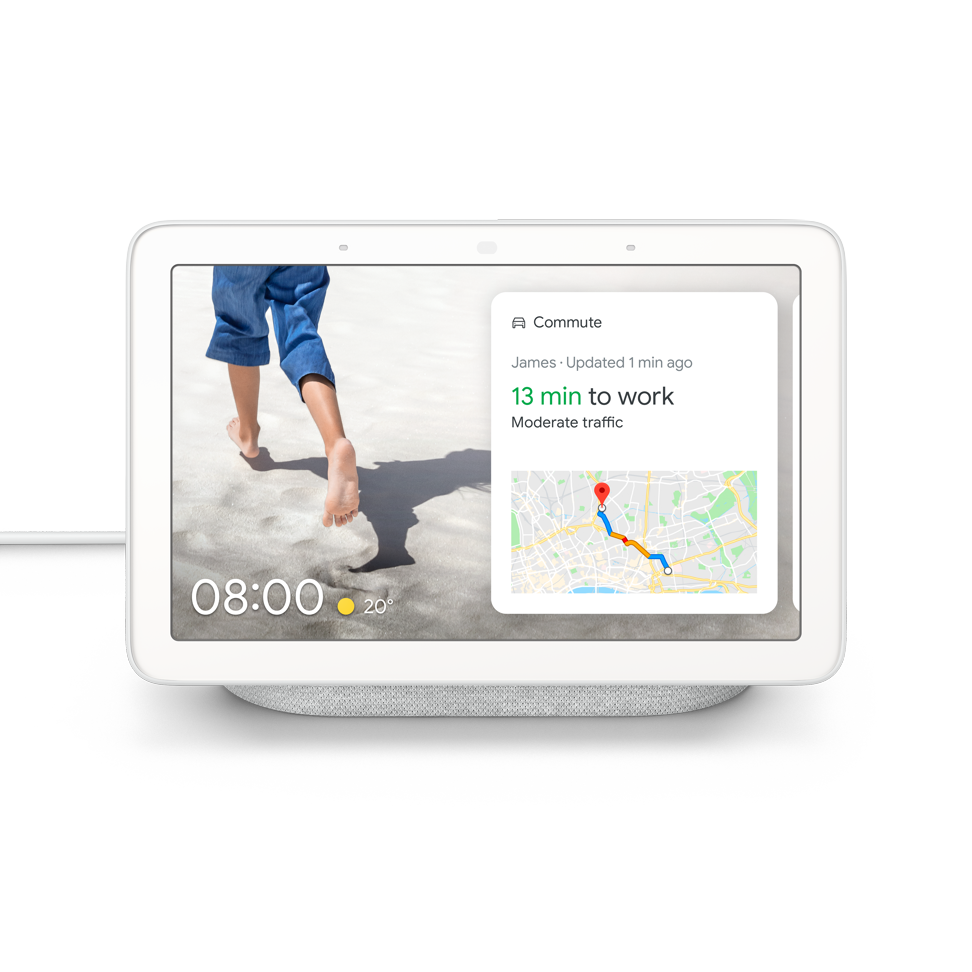
Google Nest Hub review: Home Hub digital assistant rebrand boasts crisp video display – but lacks volume
- Nest Hub is the same as the Home Hub. The rebrand is to help better differentiate it from Google’s growing product line
- Seven-inch touch screen is responsive, but the volume of the Nest Hub doesn’t appear as loud as that of the Google Home
Nest Hub is the latest device from Google’s Connected Home series that adds a touch-screen display to your friendly virtual personal assistant for your home.
We test how well it communicates with users and other smart gadgets around the house or flat.
Hardware and set-up
The Nest Hub is a pure rebranding exercise for Google. The Nest Hub is exactly the same as the Home Hub. The rebrand is to help better differentiate the device from Google’s growing product line.

The Nest Hub has a slightly larger footprint of 178cm (length) by 67cm (depth) to accommodate the 7-inch touch screen, though it is still relatively compact.
There is no camera for peace of mind on the privacy front, while a slider switch along the back lets you turn off the two far-field microphones – the latter is also found in other Google Home devices. Volume control buttons can be found on the back of the Nest Hub, though it can also be adjusted with your voice or the touch screen (more on that later).
You will need to download the Google Home app on your Android or iOS smartphone to set up the Nest Hub. If you are already using it, you just add a new device on the app. This will kick off a search via Bluetooth, which will find your device and prompt you to add it. Expect to be prompted for information such as the name of your home Wi-fi network, as well as the name of the room for ease of management.
The Nest Hub is powered by a bundled adaptor that terminates in a proprietary plug. This isn’t typically an issue, though the cable length that is just shy of two meters might limit the Nest Hub’s placement at spots far from a power point. The Nest Hub is also a Chromecast device, so you can cast video content from compatible apps to it.
Performance

If there is one weakness, it may be the Nest Hub’s inability to pick up verbal commands when more than one person is speaking. This can happen more often than you think with the device’s sensitive far-field microphone: a family member on the phone, conversations between family members, or simply the television in the background.
While the volume of the Nest Hub doesn’t appear as loud as that of the Google Home, I personally found it to be adequate. When streaming music via Spotify or YouTube, I found that a setting of 50 per cent to 60 per cent works well. If you set the volume to max, it should fill any room in an apartment with music. Just don’t expect the fidelity of your home audio system.
A built-in sensor on the front senses the ambient lighting and automatically dims the screen to the appropriate level in dim lighting or at night. Notably, it will also tweak the warmth of the colour display by default (you can disable it), which make photos really shine.

Software and integration
Speaking of photos, you can set the device to function as a photo frame, which will see it scroll through a continuous slide show of photos when it’s not in active use. Google bills the Nest Hub as the ultimate digital photo frame. Our experience shows that it isn’t that much of an exaggeration.
You can either select specific albums or make use of Google’s artificial intelligence technology to pick photos from a “curated album” containing selected people. To use the curated list, you will need to make an initial selection from a list of headshots automatically generated at configuration time – only photos of people you shortlist will show up on the slide show.
Support for IoT (internet of things) devices is another major selling point for the Nest Hub, though the integration can be finicky at times.
Attempts to link my Mi Home account kept failing with no error message, though my August Smart Lock and Nest cameras worked just fine. It was cool to unlock the door with a spoken command or stream real-time video feeds from the various cameras around the house.
You can also access some rudimentary controls such as setting alarms and adjusting the brightness and volume by swiping your finger up from the bottom edge. Swiping down from the top brings up several short cuts, including the ability to access predefined “Routines” where you can chain multiple actions that get implemented in sequence.
Finally, users with large apartments or houses will appreciate the ability to broadcast an audio message to other Google Home devices in your house. The broadcast short cut can be accessed by swiping down, or you can simply ask Google to “broadcast a message”.

Conclusion
The Google Nest Hub was a surprisingly delightful device that works with a huge and still-growing list of smart devices around your home. And if you have children, the ability to stream YouTube video content might even free up the big screen for your personal entertainment.
And when you consider the capabilities, such as the broadcast feature and ability to synchronise music playback among multiple Google Home devices, it is evident that Google really wants you to purchase more than one.
This brings us to probably the most compelling aspect of the Nest Hub – its price. While I won’t call US$120 cheap (It is currently on offer at US$79 on the US Google Store), it does represent a relatively affordable way to kick start your journey into a smart home.

